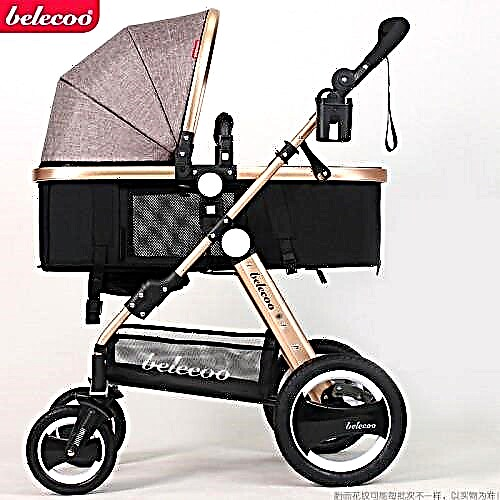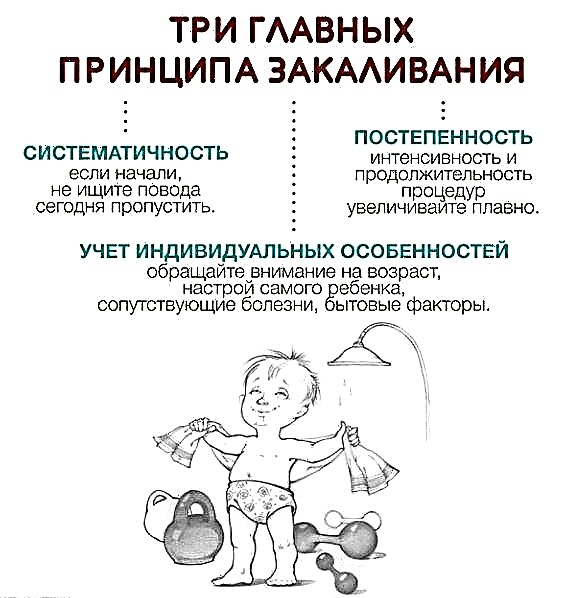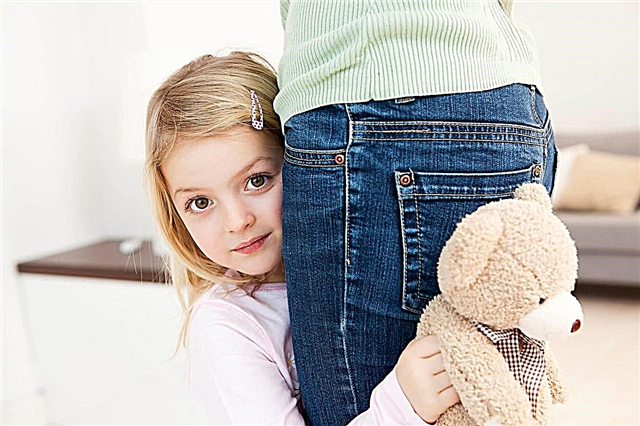What is White Noise? Why use white noise for newborns? What types of "noise" are there, and what is their benefit (and is there any harm)? Maybe this is a great new way to calm and put a newborn baby to sleep? Let's figure it out together ...
Good afternoon “I’m your baby”! I am on the verge of a nervous breakdown and really hope that you can help me. My little daughter is only a month old, but I am already tired of chronic lack of sleep. I can't get my child to sleep in any way. Masha falls asleep for a very long time and wakes up from the slightest noise (even a low sound can wake her up). I do not get enough sleep at all, I am annoyed with the child, I have neither the time nor the energy to do my household chores, I hardly have time to do anything!
My neighbor told me that there is one way: white noise for newborns. When using the method, babies quickly calm down, sleep long and soundly. But, unfortunately, she doesn't really know how to organize white noise and how to use the method correctly. I ask you to tell in detail about a wonderful way that allows babies to sleep sweetly, and parents to take some time for themselves.

Many young parents are faced with the problem of light intermittent sleep in a newborn. This problem is easy to deal with if you use this method.
What is white noise: types of white noise
The white noise technique for restful sleep in newborn babies is relatively new. However, some of the techniques of this method to lull the baby and provide him with a long, sound sleep have been used for a long time.
What is this wonderful white noise? It's simple.
White noise is a combination of sounds of varying frequency, volume and intensity, creating a monotonous acoustic background. This noise evenly fills the entire auditory range. The result is a monotonous sound without abrupt changes that allows the baby to calm down and fall asleep.
White noise occurs naturally (natural white noise). The sources of such sounds are:
- the murmur of a stream;
- the noise of the waterfall;
- sounds of the rain;
- the sound of the ocean, the surf, the rustle of leaves, the hum of the wind, etc.
White noise also includes the sounds that many household appliances emit during operation (technical white noise):
- air conditioning;
- hairdryer;
- vacuum cleaner;
- Washer;
- fan;
- pump.
You can create such noise artificially. To do this, you can:
- turn on the water tap (shower);
- find an unoccupied wave in the radio receiver (hiss of a free radio frequency or TV channel);
- by including the corresponding audio recording;
- use an appliance that generates white noise.
By the way, the whispering and drawn-out “sh-sh-sh” with which mothers intuitively try to calm the child is also a kind of white noise.
Origin of the theory
The idea that the acoustic background does not irritate babies, but promotes sound sleep, appeared after studying the conditions of the fetus in the mother's womb. In the mother's womb, the unborn baby is not at all surrounded by complete silence, the fetus hears many sounds. The little man hears how his mother's heart beats, how the blood moves through her vessels, how the lungs work, inhaling and exhaling air. Some sounds from the outside world also penetrate to him. This background noise accompanies the fetus throughout its formation. The noise level can reach 90 - 100 dB.
The child gets used to this background. White noise very much reminds the baby of this "speaker system", which was a guarantor of safety for him. That is why the baby automatically relaxes and calms down under its influence.
However, many parents, trying to create ideal conditions for the baby, do not think about the conditions in which the baby is before birth, and make a fatal mistake, during sleep they artificially protect the newborn from any sounds. Carefully shielding the newborn from all sounds does not soothe the infant, but increases his anxiety and sensitivity during sleep. But it is worth trying to organize "white noise", and you can forget about the problems with long falling asleep and intermittent sleep.
If you are not sure about the effectiveness of the white noise method for lulling a baby, then remember that all mothers make such sounds completely involuntarily, lulling their baby. Holding the newborn on the arms, mummies say: "sh-sh-sh" or: "h-h-h". These sounds are classic white noise. And this method really works!
Many parents report that newborns fall asleep better if they use a hairdryer, fan, or even a vacuum cleaner. Some parents specifically buy indoor fountains or turn on aquarium compressors to “lull” the baby. An indisputable fact is that on the street, where there are many extraneous sounds, the child sleeps better than in the silence of the house. All these cases are proof of the effectiveness of white noise.
What is white noise for?

White noise promotes the activation of the self-soothing mechanism, which is formed in a baby even before his birth, and a properly selected acoustic background contributes to its activation. The method can be used for a variety of purposes:
- Fall asleep quickly. Under the correct acoustic background, the baby relaxes and falls asleep faster. Monotonous sounds help him to feel safe, just as it was inside the mother's womb;
- Deep sleep. White noise provides a sound sleep for the newborn. Scientists have long established that human sleep has two alternating phases: superficial and deep. Their change is accompanied by a short awakening. In this short moment, any rustle or other extraneous sound will lead to the baby waking up completely, and it will be difficult to lull the baby to sleep again. The usual cycle of deep sleep in babies is only 20-30 minutes, and then the phase of superficial sleep begins, when even a slight coughing can pull Morpheus out of the embrace. After that, the child is unlikely to be able to sleep soundly. This phase occurs in infants twice as often as in adults. Exposure to white noise does not interrupt sleep at the moment of transition from one phase to another.
Also, calming and relaxing from white noise often helps a baby if he refuses to breastfeed due to overexcitation or extreme fatigue. White noise is also a stress reliever for newborns.
Against the background of white noise, extraneous sounds will not be so noticeable as long as white noise sounds, sleep will be sound and calm, and the transitions between sleep phases will be smoother.
- Elimination of extraneous sounds. White noise effectively absorbs extraneous sounds. The sharp barking of the dog outside the window, the signal of the car, the screams of children playing (even if children are playing in the next room), all this is successfully muffled by the general sound background;
- Calming down. The monotonous noise reminds the newborn of the intrauterine state and has a very beneficial effect on the nervous system. The kid begins to feel protected, he is comfortable, he quickly calms down. If the baby is overexcited, cannot stop crying, or is hysterical, turn on white noise to help calm the baby quickly. Also, calming and relaxing from white noise often helps a baby if he refuses to breastfeed due to overexcitation or extreme fatigue. White noise for newborns is also a stress reliever;
- Relaxation. The monotonous background sound is useful for adults too. Everyone knows how pleasant it is to relax and forget about current worries under the sound of rain outside the window or under the murmur of a stream. Whether you need to recuperate, calm your nerves, or simply relax, sit in a comfortable position and turn on white noise. In ordinary situations, our brain constantly analyzes the sound background, monotonous noise does not require much effort to scan, which allows you to completely switch off and indulge in a quiet rest.
White noise can help parents sleep better by using the same principle of reducing REM sleep. The child sometimes just tosses and turns, but does not wake up completely, and the mother immediately reacts to any rustle and then cannot fall asleep for a long time. White noise will make her sleep better and feel better.
Benefit and harm
- The white noise method is most effective for babies in the first 4 months. This is due to the fact that intrauterine sensations are preserved in the memory of the baby. The child remembers the sounds he heard in the mother's womb, white noise soothes him and provides psychological comfort.
- An important benefit of white noise is sleep enhancement. Healthy sleep has the most favorable effect on the baby's nervous system, the baby gets enough sleep, which means that while awake, the baby will feel great, will not be capricious, will be happy to communicate with her mother and explore the world around her.
- White noise will give mom some free time. Instead of rocking the baby for hours and running to the cradle at every sound coming from the street, she can calmly take care of herself, other children or household chores. After all, it takes less time to lull a baby, and his sleep lasts longer. And you do not need to constantly monitor the baby while he sleeps, hoping to notice the awakening period in time and try to rock the child again.
- This method is completely harmless. The sounds that make up white noise are in the comfortable range for humans. White noise does not affect subconscious processes, mental and physiological development of the child, and cannot cause hearing impairment.
- The method is not addictive (studies have proven this). The kid will grow up and develop and over time he will control his own sleep, and the need for an additional acoustic background will simply disappear.
It is interesting! There is a version that the use of white noise during infant sleep reduces the incidence of sudden infant death syndrome (SIDS). This is a very controversial statement, since a study by foreign scientists using a fan in a child's room was aimed at testing the theory of the effect of carbon dioxide accumulation on the breathing of babies. The fan was supposed to speed it up. And excessive concentration of carbon dioxide is one of the possible causes of SIDS. The results of the experiment say nothing about white noise.
Sleep more evenly due to white noise in children is less prone to somnambulism (sleepwalking).
How to use the method
It is recommended to use white noise only when the baby is sleeping. Depending on the characteristics of the child, you can turn on the sound background only during falling asleep or leave sounds for the entire period of sleep.
If you want to calm the newborn, then the noise is used in accordance with certain rules:
- to calm the baby when he is crying or naughty, the acoustic background should be louder than the baby's cry. This is necessary in order for the baby to hear the sound and listen. For example, for that very mother's "boo" to work, it is necessary that the volume of the mother's voice be greater than the crying of the baby;
- when the baby stops crying, decrease the volume;
- during sleep, the volume should not exceed 50 dB. Louder noise will be harmful to the psyche and hearing;
- the source of noise must be at least one meter away from the child.
Parents also need to know that with the help of the method it is possible to calm down the baby only if they ate tantrums and whims caused by nervous tension, fatigue or psychological discomfort. If the child is not healthy, suffers from colic, is ill or hungry, white noise will not help solve the problem.
Today, there are even special devices that generate a pleasant noise for newborns. They may have a different design from each other, but most have the same basis - a fan, the sound of which helps to calm the child. Some devices generate acoustic noise or are common players for recorded audio files.

Also, the devices are packed in various toys that the baby can take with him to the crib and sleep, hugging. Such options are also convenient in case of travel, they can be taken on trips - the toy will always help to calm the child. There are even nursing pillows, inside which devices are built that produce a uniform sound. This option is especially good, mommy will be able to do two things at the same time, and feed the baby, and put him to bed.

White or pink noise - differences
In addition to white noise, pink noise is used to calm newborns. There are very minor differences between these methods.
By the way, there are other color noises: pink, red, blue, purple, brown and gray.
- Pink noise is "filtered" white. All harsh sounds are removed from the range;
- Pink noise is not as diverse. The resulting acoustic series turns out to be poorer and more monotonous, but many believe that it is he who is softer and this option is more suitable for babies.
There are no unequivocal research data that would confirm which type of noise was more effective and beneficial for children. Focus on the tastes of your baby and use the acoustic range that most favorably affects your baby. Experiment, choose different sounds and their combinations, and soon you will understand which acoustic series evokes the most positive emotions in your child, and which noise he will like the most.
I hope you have received all the information you need and will be able to improve your little daughter's sleep. You can be sure that thanks to the white noise, you will have time for both rest and household chores.
I also hope that after that you will no longer have problems with lulling your daughter and you will have free time, during which you will not only have time to cope with all your affairs, but will also be able to pay a little attention to yourself.



